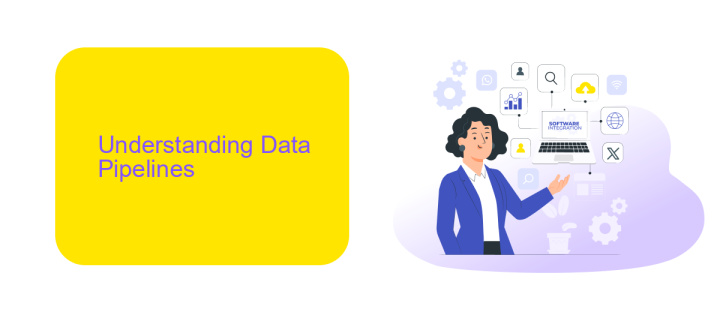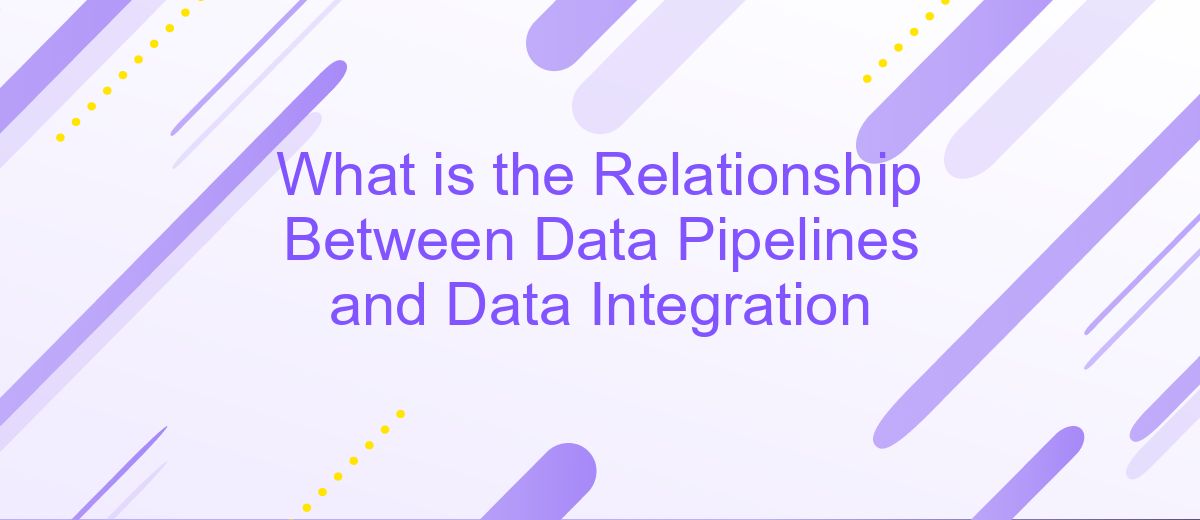What is the Relationship Between Data Pipelines and Data Integration
In today's data-driven world, understanding the relationship between data pipelines and data integration is crucial for efficient data management. Data pipelines automate the flow of data from various sources to destinations, while data integration ensures that this data is combined and harmonized for meaningful analysis. Together, they form the backbone of modern data processing and analytics, enabling informed decision-making.
Introduction
Data pipelines and data integration are critical components in the modern data-driven landscape. Understanding the relationship between these two concepts is essential for organizations aiming to optimize their data workflows and ensure seamless data management. Data pipelines refer to the automated processes that move data from one system to another, while data integration involves combining data from different sources to provide a unified view.
- Data pipelines automate data flow across systems.
- Data integration merges data from multiple sources.
- Both are crucial for effective data management.
By leveraging services like ApiX-Drive, organizations can streamline their data integration and pipeline processes. ApiX-Drive offers a user-friendly platform that simplifies the setup of automated data flows and integrations, ensuring that data is consistently and accurately transferred between systems. This not only enhances data reliability but also empowers businesses to make informed decisions based on comprehensive data insights.
Understanding Data Pipelines

Data pipelines are essential frameworks that facilitate the smooth flow of data from one point to another, ensuring that data is collected, processed, and delivered efficiently. These pipelines consist of a series of steps and tools designed to handle data extraction, transformation, and loading (ETL). They enable organizations to automate the movement of data across various systems and applications, thereby improving data accessibility and reliability. The core components of a data pipeline include data ingestion, data processing, and data storage, which work together to provide a seamless data flow.
Understanding data pipelines is crucial for businesses looking to leverage data-driven insights. By automating data integration processes, tools like ApiX-Drive can significantly simplify the setup and management of data pipelines. ApiX-Drive offers a user-friendly interface that allows for quick and easy connections between multiple data sources and destinations, enhancing the efficiency of data workflows. This service supports a wide range of integrations, making it an invaluable tool for organizations aiming to streamline their data operations and achieve real-time data synchronization.
Exploring Data Integration

Data integration is a critical process that combines data from various sources into a unified view, enabling more comprehensive analysis and decision-making. This process is essential for businesses that need to consolidate information from different departments, databases, or external sources to gain actionable insights. Effective data integration ensures that data is accurate, consistent, and readily available for analysis.
- Extracting data from multiple sources.
- Transforming data into a consistent format.
- Loading data into a centralized repository.
Tools and services like ApiX-Drive facilitate data integration by automating the extraction, transformation, and loading (ETL) processes. ApiX-Drive allows businesses to seamlessly connect various applications and data sources, ensuring that information flows smoothly and is always up-to-date. By leveraging such platforms, organizations can significantly reduce the time and effort required to integrate data, leading to more efficient operations and better decision-making capabilities.
Relationship Between Data Pipelines and Data Integration

Data pipelines and data integration are closely intertwined concepts in the realm of data management. Data pipelines refer to the sequence of processes that move data from one system to another, often involving extraction, transformation, and loading (ETL) steps. On the other hand, data integration focuses on combining data from different sources to provide a unified view.
The relationship between these two lies in their complementary roles. Data pipelines are the mechanisms that facilitate the flow of data, while data integration ensures that this data is harmonized and made consistent across various systems. Together, they enable organizations to leverage their data more effectively.
- Data pipelines automate the movement and transformation of data.
- Data integration unifies data from diverse sources.
- Both are crucial for creating a coherent data ecosystem.
Tools like ApiX-Drive can significantly simplify the setup of data integration processes by providing pre-built connectors and automation capabilities. This ensures that data flows seamlessly through pipelines and is integrated efficiently, enabling businesses to make data-driven decisions with ease.


Benefits and Challenges of Integrating Data Pipelines and Data Integration
Integrating data pipelines and data integration offers numerous benefits, including streamlined data flow, improved data quality, and enhanced decision-making capabilities. By automating data movement and transformation, organizations can ensure that data is consistently accurate and up-to-date. This integration also reduces manual effort, minimizing the risk of human error and freeing up valuable resources. Tools like ApiX-Drive facilitate seamless integration by providing easy-to-use interfaces and robust connectivity options, enabling businesses to connect disparate systems effortlessly.
However, integrating data pipelines and data integration also presents challenges. Ensuring data security and compliance with regulatory standards can be complex, especially when dealing with sensitive information. Additionally, the initial setup and maintenance of these integrations require significant investment in terms of time and expertise. Compatibility issues between different systems and platforms can further complicate the process. Despite these challenges, the long-term benefits of a well-integrated data ecosystem make it a worthwhile endeavor for organizations aiming to leverage their data effectively.
FAQ
What is the difference between data pipelines and data integration?
Why are data pipelines important for data integration?
Can data pipelines be used without data integration?
What are some common challenges in data integration that data pipelines help solve?
How can I automate my data integration processes?
Routine tasks take a lot of time from employees? Do they burn out, do not have enough working day for the main duties and important things? Do you understand that the only way out of this situation in modern realities is automation? Try Apix-Drive for free and make sure that the online connector in 5 minutes of setting up integration will remove a significant part of the routine from your life and free up time for you and your employees.

